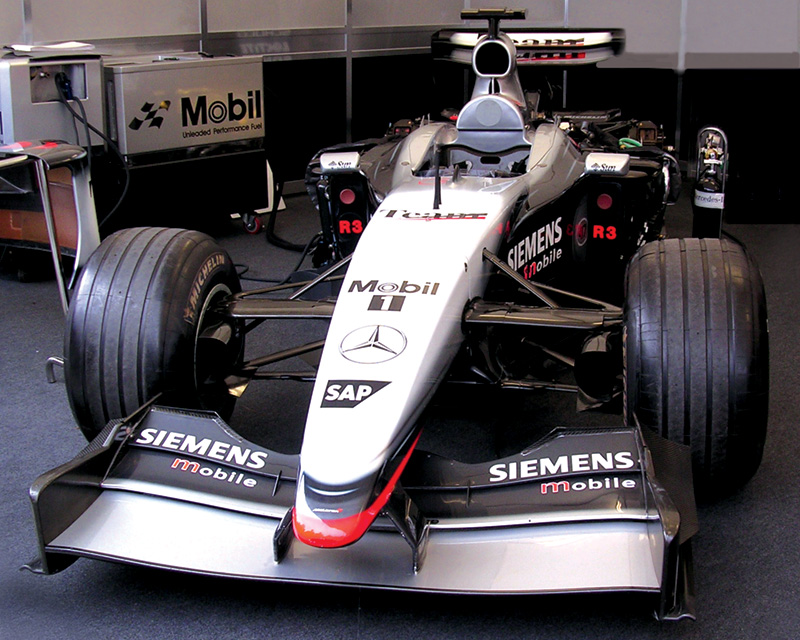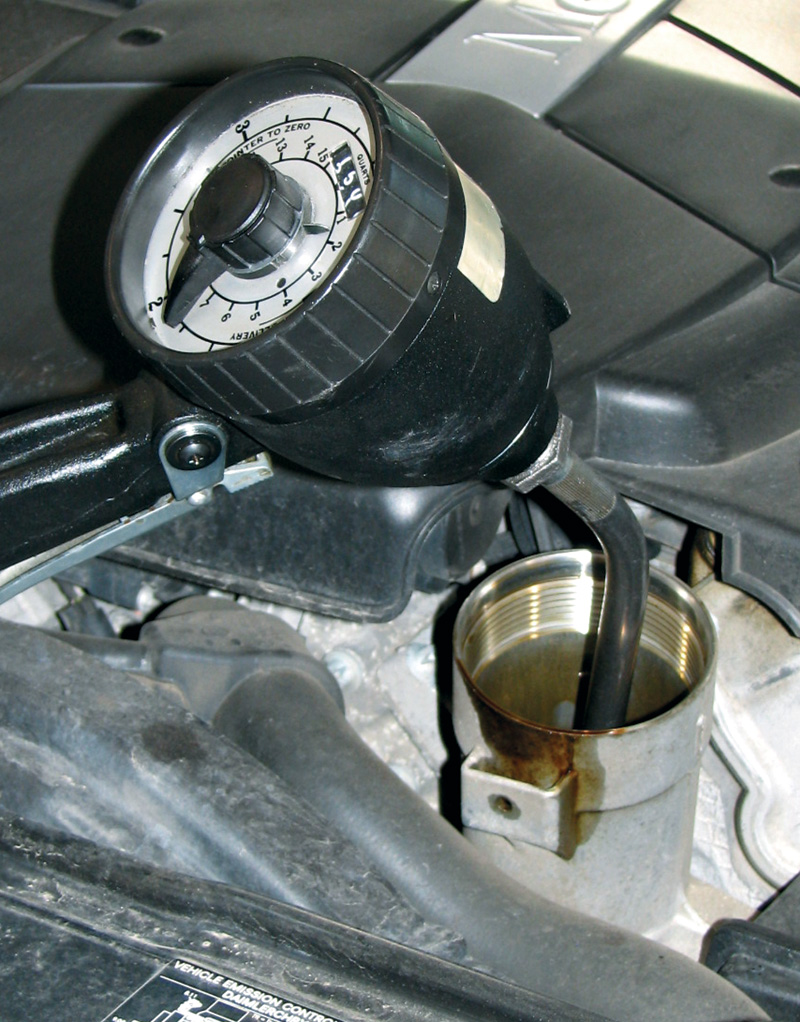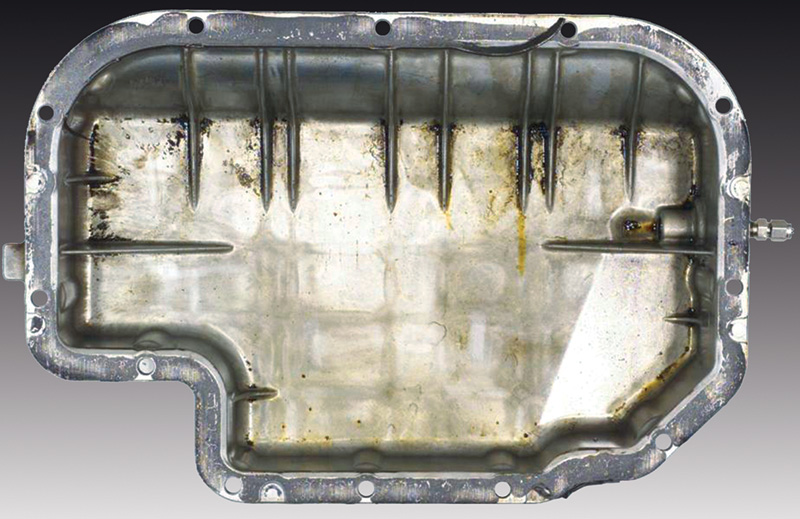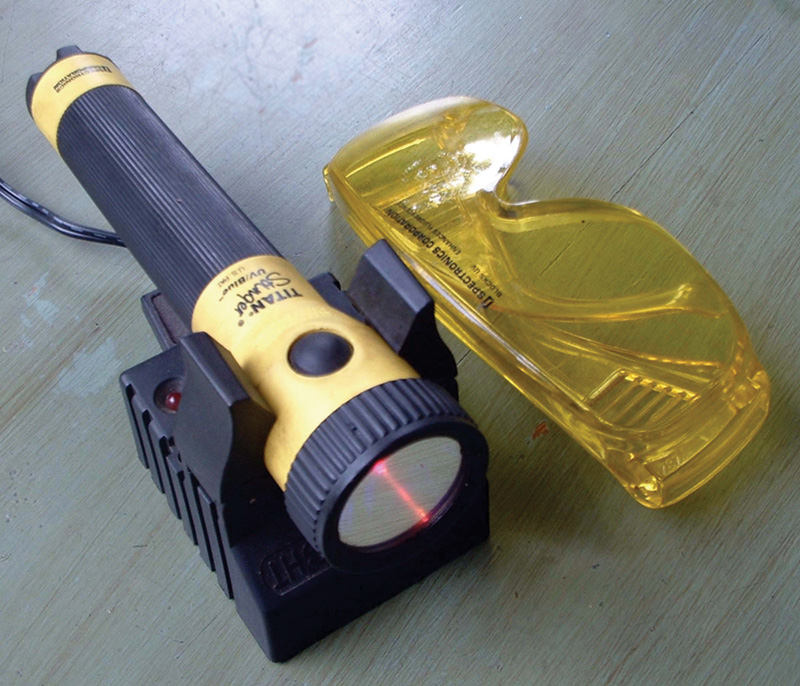Mercedes-Benz wants man-made, not dinosaur-produced
In most cases, something real is better than something synthetic, but not for lubricating oils. The Mercedes-Benz Flexible Service System (FSS) calculates when oil changes should be done based on factors other than mileage alone, thus allowing change intervals to be extended. Since April of 2001, M-B has recommended synthetic liquid lubricant for all Mercedes-Benz vehicles, so we can all feel more comfortable with the longer intervals.

If you’ve ever worried that the viscosity of synthetic oil is too thin to provide sufficient film strength, you can forget it. As the decal proclaims, this F1 car uses the most popular brand, and its engine operates at fabulous rpm for hours at a time.
Mercedes was one of the first, but is not unique in using synthetics as its OEM oil. According to a Mobil 1 spokesman, 27 different cars now use his company’s oil as the factory fill, including prestige nameplates such as Mercedes, Porsche, Bentley, and Corvette. The reason is simple: superior performance.
Oil can be evaluated using many different standards: viscosity consistency, anti-wear, anti-oxidation, and detergent properties are just a few of the tests done that apply directly to automotive engines. In every comparison, synthetics beat mineral- or petroleum-based oils.
Multi-viscosity synthetics can also be used at lower viscosity ratings than most petroleum based oils, which helps improve performance and fuel economy by reducing drag. This characteristic also allows it to get into bearings faster at low-temperature start-up (See Viscosity Basics Story). Mobil 1, for example, goes all the way to a 0W rating, and you can’t get lower than zero. However, synthetics’ superior performance comes with a higher price tag. Even at the heart-stopping prices that crude oil (the base for non-synthetic lubricants) reached and maintained since mid-2005, synthetics are still more expensive than conventional lubricating oil. The premium price is the only reason why synthetics haven’t taken over the market. In fact, synthetics are estimated to account for only about five percent of engine oil sales. But their market share is growing as more people — shop owners, techs, and motorists alike — realize that the premium performance of synthetics justifies their higher price.

What’s in your dispenser drum? Mercedes-Benz has recommended synthetic oil for all its vehicles since April of 2001. Petroleum-based oils simply cannot provide the lubrication and protection that current Mercedes-Benz engines require. You should use synthetic oil in all V6, V8, and V12 engines.
What oil does
Ask most people, including many technicians, what oil does and you will usually hear “lubricate†or “reduces friction†in reply. If that were entirely correct, engine oils would be simple to produce. But lubrication and friction reduction is only one of the jobs that motor oil must do. In addition, it must:
- Clean the engine by “capturing†contaminants and holding these microscopic particles in suspension until they can be removed by the oil filter, then eliminated during regular LOF service.
- Reduce the temperature of engine components by absorbing and redistributing heat.
- Provide a seal between the piston rings, their grooves and the cylinder walls as the piston travels up and down.
- Reduce engine wear by not only reducing friction, but also by absorbing the impact force placed on the connecting rod bearings and crankshaft rod journals when the piston changes its direction of travel.
As engine oil lubricates, cleans, cools, seals, and absorbs shock, it must also:
- Cling to the various surfaces to provide at least some lubrication and protection during start-up until normal oil pressure has built up and oil is flowing.
- Maintain viscosity (thickness) across a wide range of temperatures. If oil gets too thick when cold, flow will be inadequate during start-up in cold conditions resulting in rod knocks and accelerated bearing wear. If oil gets too thin when hot, it cannot maintain the film strength needed for adequate lubrication.
Synthetics accomplish all lubrication tasks better than petroleum oils because of the difference between the base stocks. Basically, molecules in a synthetic remain stable under a wider range of temperatures and pressures. Long after petroleum oil has failed due to heat and pressure, synthetic oil just keeps on flowing and providing protection.

After more than 210,000 miles, this oil pan from a Mercedes E320 shows virtually no sludge. Synthetic oil was used exclusively, with 15,000 mile oil and approved filter change intervals
(courtesy ExxonMobil).
More advantages

Since the lighter fractions of synthetic oil don’t flash off as readily as those of
conventional oil, and because detergent additives work especially well with it,
sludging is much less of a problem as long as the required oil and filter change interval is observed.
Synthetics also have other advantages over conventional oils:
- Synthetics have much less change in viscosity as temperatures change. The synthetic will flow more smoothly during cold start-up and will maintain viscosity for consistent lubrication as the engine reaches operating temperatures.
- Even at extremely cold temperatures (down to 50 below zero F.), low viscosity synthetic oil will flow. At those temperatures, conventional oils look like brown concrete that is starting to set up.
- Better high-temperature performance. The lighter chemical compounds in conventional oils will vaporize under high temperatures, causing increased oil consumption, decreased lubrication performance, and sludge formation. Depending on the viscosity grade, synthetics resist vaporization better.
- Synthetics tend to cling to engine parts after shut-down instead of completely draining down into the oil pan. The microscopic layer of synthetic oil on the surfaces of moving parts at start-up drastically reduces engine wear.
- Any oil will fail if it becomes oxidized, and every oil additive package contains oxidation inhibitors to increase service life. But these inhibitors are much more effective in a synthetic, which is one of the major reasons why synthetic oil can be safely used, under certain driving conditions, for 10,000 miles or more between changes.
- Because of their greater stability, synthetics cause fewer problems with sludge and other oil-related contamination. The high level of detergents in synthetics and the greater effectiveness of those detergents keep the engine cleaner than would be the case with ordinary motor oil.
The base difference
Viscosity BasicsViscosity is a measure of how readily or reluctantly a given oil will pour. In the United States, the Society of Automotive Engineers (SAE) established the test procedure to measure viscosity. The lower the number the easier the oil will flow because it is “thinner.†A high viscosity number means the oil is “thicker.†In cold weather, you want a lower viscosity so the oil will flow easily during start-up. However, as the engine temperature increases, you want a higher viscosity to resist oil film breakdown. SAE has two viscosity test procedures. The winter viscosity value is measured at 0 degrees F. and has a “W†after the number (SAE 5W, 10W, or 20W). For the rest of the year, a high-temperature viscosity is tested at 210 degrees F. and has no letter behind it (SAE 20, 30, 40, and 50). Very few single viscosity oils, conventional or synthetic, are sold today. Most oils, including all of the Mercedes Benz-approved synthetics, are “multi-viscosityâ€, meaning that they are effective over a wide range of operating temperatures. For example, a 5W-30 oil meets the SAE 5W standard for winter oil at 0 deg. F. It also meets the SAE 30 standard when tested at 210 deg. F. This oil will flow easily at low temperatures and will still provide full lubrication at normal operating temperatures. Depending on the quality, an oil with a lower viscosity rating may reduce friction and parasitic drag, enabling engines to perform better and get better fuel mileage. |
Petroleum lubricants are among the many hydrocarbon products, along with diesel, gasoline, kerosene, etc., produced by distilling crude oil. After distillation, petroleum lubricants are further processed by removing solvents, waxes, sulfur and other impurities normally found in crude.
No oil, synthetic or otherwise, works alone. Both have complex additive packages to improve life, reduce friction, avoid oxidation, etc. After the base stock is completely refined, these complex additive packages are added to give the oil the performance characteristics required in modern internal combustion engines.
Synthetic oils use one of several man-made base stocks. Currently, four different base stocks are used: synthetic hydrocarbon, diesters, poly esters, and complex esters. For the purposes of this article, just naming those four is as far into the complex subject of synthetic oil chemical engineering as we will go.
Synthetic base stocks have superior lubricating characteristics compared to petroleum-based oils. After a base stock is selected, manufacturers blend in their unique additive packages to give their oil its full range of performance characteristics. Although both synthetic and petroleum oils use similar additive packages, the additives work better in synthetic oil.
Not so new
The synthetic automotive oils now available first appeared in the United States in the mid-1970s, but the history of synthetics actually goes back a century earlier.
Professor Charles Friedel, a French chemist, and Professor James Mason Crafts, an American chemist, working together, were pioneers in hydrocarbon (petroleum-based) chemistry. The two are generally recognized for creating the first synthetic oil in 1877. However, more than 50 years passed before Standard Oil of Indiana developed a practical method of producing synthetic oil in commercial quantities. But the oil’s very high cost, compared to the price for petroleum-based lubricants, which were more than adequate to meet the engine performance demands of the time providing recommended change intervals were concerned, doomed synthetics in the marketplace.
War-time necessity gave synthetics their first practical applications. In the mid- to late-1930s, Germany took the lead on synthetic research. World War II was imminent, and having limited access to petroleum, German chemists developed several synthetic alternatives to conventional lubricating oils. The crankcases of the diesel engines that powered German tanks during the battles on the frigid Russian front were filled with synthetic oil.
Synthetic oils also helped pave the way for the development of jet aircraft during the last days of WWII and into the 1950s. Jets run much hotter than piston engines and have much tighter bearing clearances. Petroleum-based oils simply could not withstand the temperatures and provide the lubrication that jet engines required, so synthetics became absolutely necessary.
In a large part, the development of synthetic automotive motor oil can be traced to the use of synthetics in jet engines. One pioneer in this effort was Air Force Lt. Col. Albert J. Amatuzio, a pilot stationed at an air base in northern Minnesota during the 1960s. Recognizing the outstanding performance of synthetics in jet engines, especially considering Minnesota’s brutal winter temperatures, Amatuzio began experimenting with synthetics for automotive use. He later developed one of the first commercially-available synthetic automotive engine oils, AMZOIL (Amatuzio-oil) in the early 1970s.
In 1973, Mobil began marketing its synthetic oil in Europe. A year later, the company introduced Mobil 1 synthetic oil in the United States. Since the mid-1970s, the synthetic market has been joined by products from most of the major oil companies and numerous lubricating oil suppliers.
The demand for synthetics received a boost from an unexpected source—the environmental movement. In the late 1960s and early 1970s, the automotive industry began grappling with newly-introduced emissions regulations. A hotter-running engine helps reduce certain emissions, so the carmakers started designing engines that ran hotter. But the temperatures were so high, petroleum-based lubricants would fail unless the oil was changed frequently.
Because synthetics could withstand higher engine temperatures without a problem, synthetic manufacturers anticipated rapid sales growth. That didn’t happen because changes in refining and additive packages enabled petroleum-based oils to perform adequately in the hotter running engines.

Before you retrofit one of your customer’s cars to synthetic oil, make sure you’ve found and fixed any leaks that might be present. Otherwise, minor seepage may escalate to heavy bleeding. By the way, nothing beats crankcase dye and a UV light for zeroing in on a leak.
Teething problems
The early seal problems have been solved — the formulations for both synthetics and seal materials have been changed. Seals in any engine made after 1980 are compatible with both conventional and synthetic oils.
The existing-leak issue remains. If an engine leaks with conventional oil, it will really leak with a synthetic. If you have a customer who has been using petroleum based oil and wants to shift to a synthetic, you should check for leaks before accepting the job. If the engine is excessively dirty, sell the customer an engine cleaning, which will make leaks much easier to find. Any leaks must be repaired before switching to a synthetic. Otherwise, guess who’s going to eat the cost for fixing a high oil consumption problem “caused by that synthetic oil you put in my carâ€!
In the 30+ years synthetics have been on the market in the United States, the formulations for both the base stock and the additive packages have been continually revised to meet new standards. Environmental regulations, which gave synthetics their first boost, continue to push better synthetic oil performance. “Environmental standards have been the big driver in the reformulation of Mobil 1,†says a company spokesman.
As emissions standards have gotten tighter, oxygen sensor and catalytic converter contamination control has become more critical. Engine oils cannot release any substances that might contaminate oxygen sensors and catalytic converters. Meeting these requirements can be a challenge.
“We had to reduce Mobil 1’s phosphorus content to protect the catalytic converter. But phosphorus was part of our anti-wear additive, so we had to develop a new additive formula for resist wear. And when you reduce oil consumption to keep the converter cleaner longer, that means oil stays in the crankcase longer. Which means you have to have a better anti-oxidant additive for longer oil life,†the spokesman tells ST. “Every time we develop a new formulation, we think we have the best oil we’ve ever produced. But then we have a new requirement to meet and we go back to the lab and produce an even better oil.â€
Aftermarket Additives
Although the profit margin on aftermarket oil additives can be very attractive, the reality is that these products offer little, if any, value. In fact, some additive manufacturers have been forced to either change their claims, or even pull their products from the market, because they could not provide independent testing that supported their claimed benefits.
Mercedes-Benz, along with all of the other carmakers, has already done extensive testing on engine lubricants. And, working with the oil companies, the carmakers have developed recommended formulations to meet lubrication performance requirements without requiring any aftermarket product.
In fact, some aftermarket additives may lead to fouling of the catalytic converter and other emission control systems when used for a prolonged period of time. The newer generations of synthetic oil are formulated to contain less of the compounds that may foul emission control devices.
There’s no need to have a degree in chemistry or chemical engineering to determine which synthetic is best for your customer’s car because Mercedes-Benz has already done the analysis for you. Just select one of the oils on the Mercedes-Benz list of approved synthetics (see accompanying sidebar), change the oil and filter, and perform the other services based on FSS monitoring and your customer can count on enjoying his or her Mercedes for a long, long time.
Approved OilsEach of these oils meets or exceeds the company’s MB 229.3 or 229.5 Lubrication Certification Standard, as noted. Use 229.5 oils in 2005 and later model year vehicles:
|








0 Comments